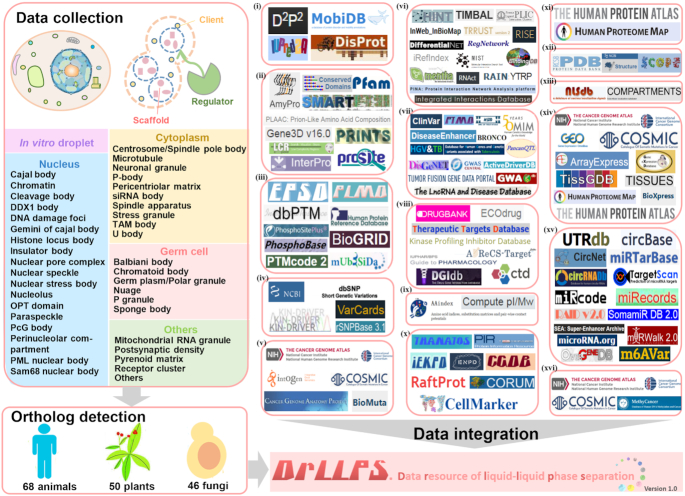Figure 1.
The experimental procedure for the construction of DrLLPS. First, we searched PubMed to collect and curate experimentally identified scaffolds, regulators and potential clients (Supplementary Table S1). We classified all collected proteins into 40 types of biomolecular condensates of five super-classes, including ‘In vitro droplet’, ‘Nucleus’, ‘Cytoplasm’, ‘Germ cell’ and ‘Others’. Then we computationally identified potential orthologs of these known proteins in 164 eukaryotes, including 68 animals, 50 plants and 46 fungi. Besides basic annotations, we further integrated annotations in 110 public data resources covering 16 aspects, including (i) IDRs, (ii) domain annotations, (iii) PTMs, (iv) genetic variations, (v) cancer mutations, (vi) molecular interactions, (vii) disease-associated information, (viii) drug–target relations, (ix) physicochemical properties, (x) protein functional annotations, (xi) protein expressions/proteomics, (xii) protein 3D structures, (xiii) subcellular localizations, (xiv) mRNA expressions, (xv) DNA & RNA elements and (xvi) DNA methylations (Supplementary Table S2).

